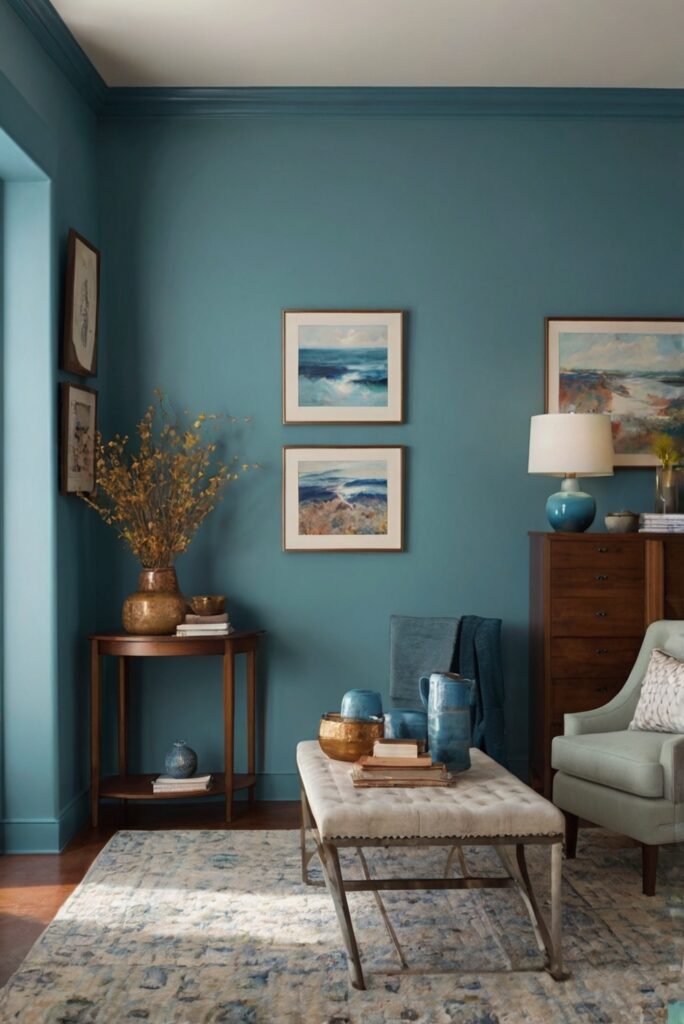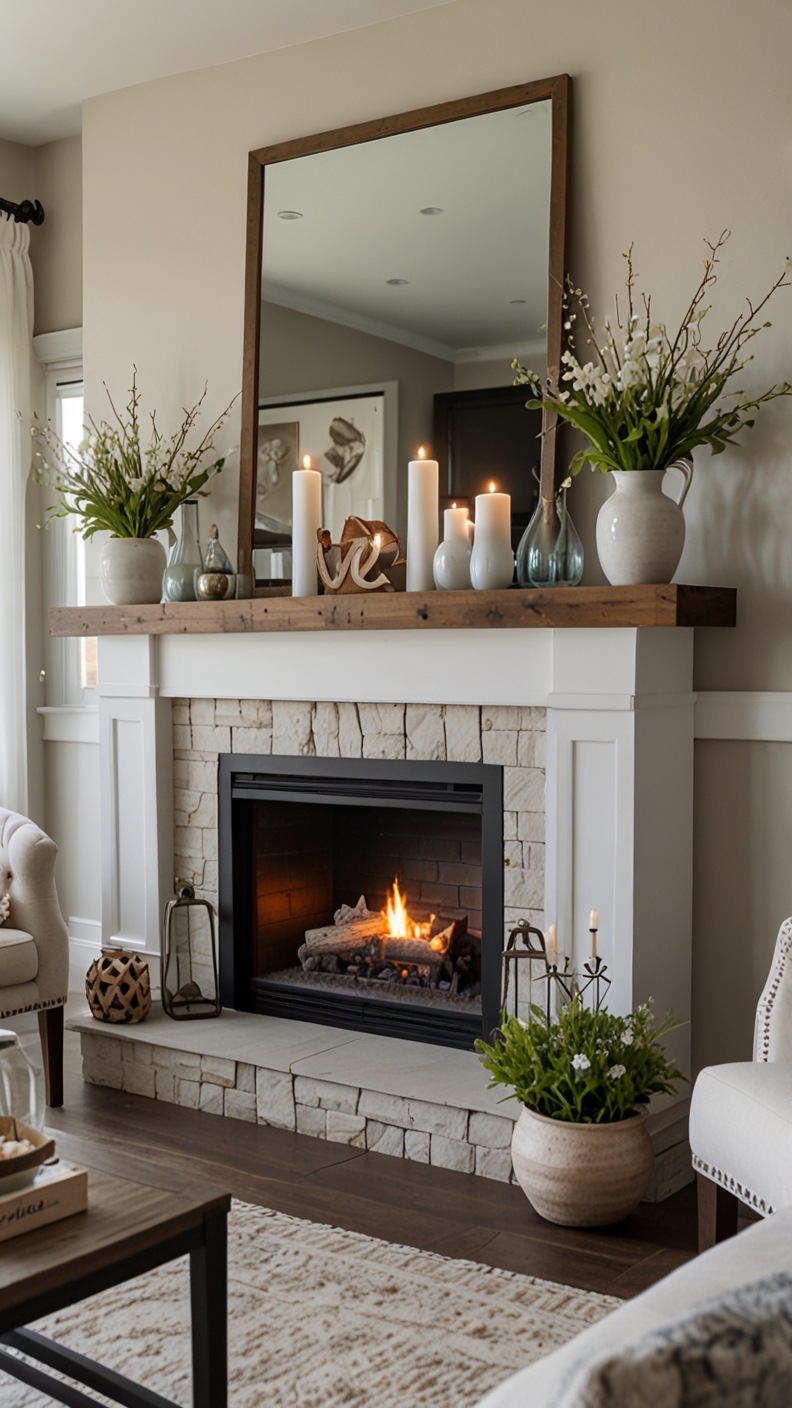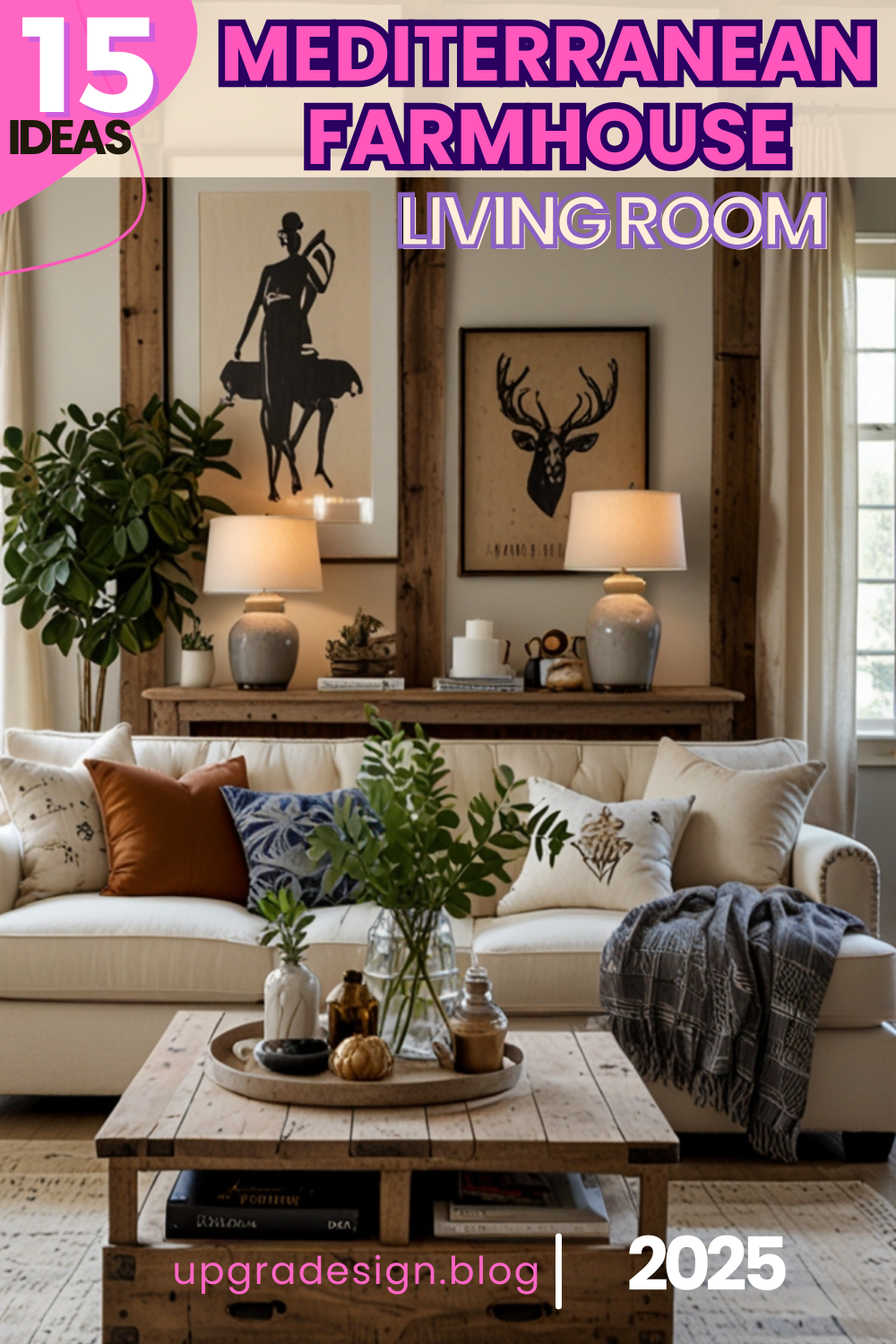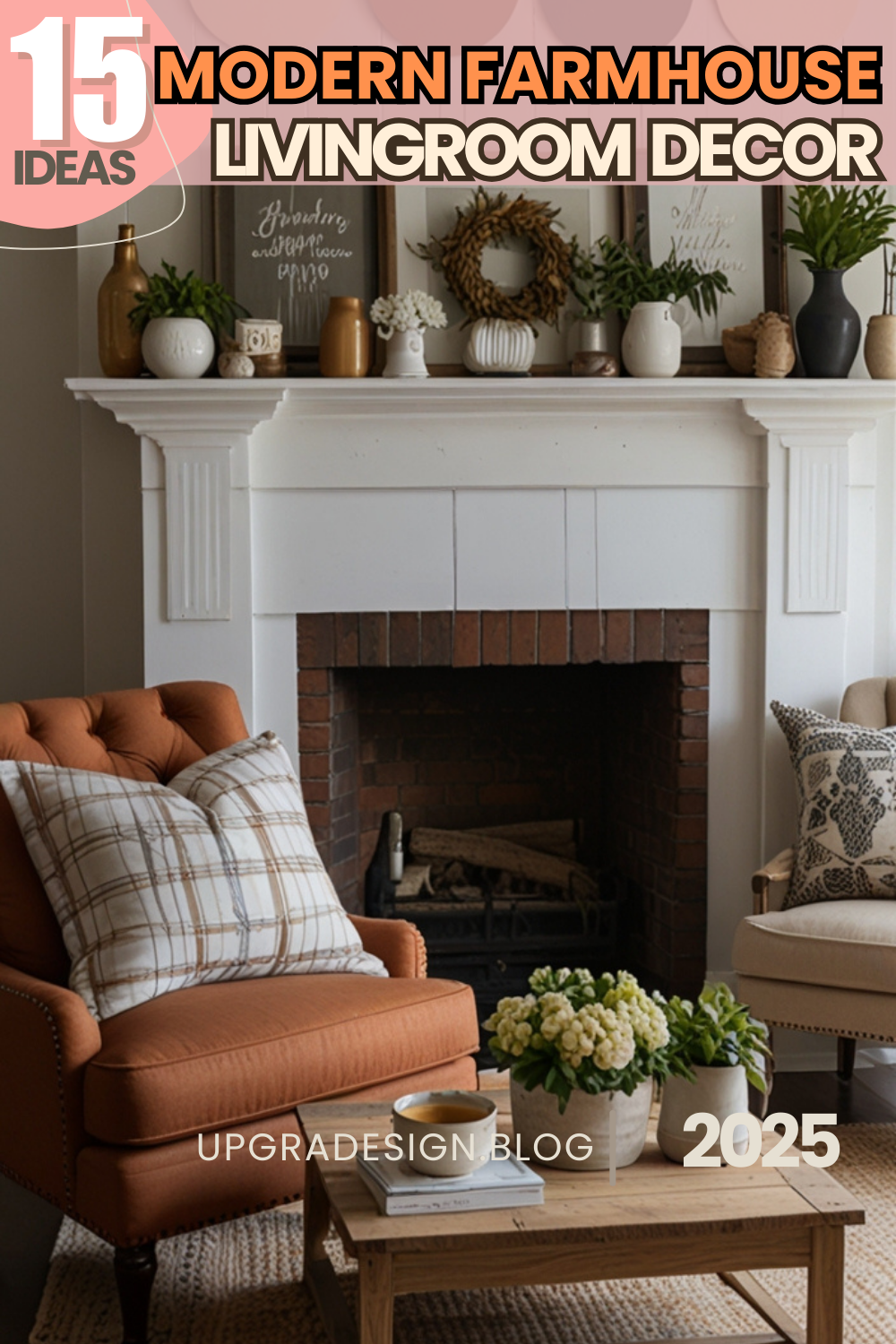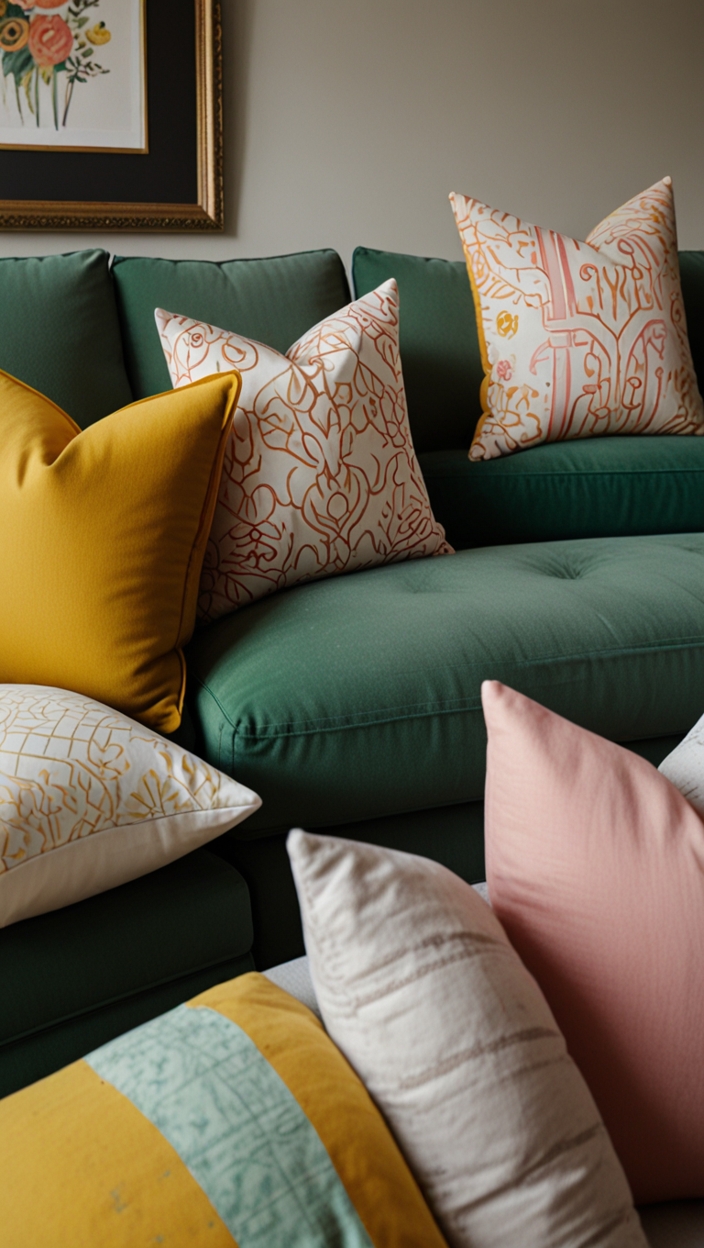Looking to create a serene atmosphere in your living room? Discover how to incorporate cool and calming colors into your color scheme with this daily interior designer routine for a relaxing space.
To incorporate cool and calming colors in your living room color scheme, start by selecting a soothing color palette like blues, greens, or light neutrals. Consider using shades like soft blue, seafoam green, or light gray to create a serene atmosphere.
Introduce these colors through your wall paint, furniture upholstery, decorative accents, and artwork. Opt for a mix of textures and patterns to add depth and interest to the space.
My Lovely Spring Paint for 2025
Ready for a Spring Makeover? Explore the Freshest 2025 Paint Trends!
White Sage/Green SW Pistachio green Soft blue Honeysweet/Orange Pink Sugar Sage Tint BMAs an Amazon Associate, I may earn a commission from qualifying purchases at no extra cost to you.
To enhance the calming effect, add natural elements like plants and wood accents. Additionally, maximize natural light and use soft lighting fixtures to create a warm ambiance.
Make sure to balance the colors throughout the room to maintain a harmonious look. Experiment with different shades and consider the impact of natural and artificial lighting on the colors.
By following these steps and paying attention to details, you can create a cool and calming living room that promotes relaxation and tranquility.
How to choose the right cool and calming colors for my living room color scheme?
My fAV Spring DECOR for 2025
Discover Spring’s Best 2025 Decor Combinations – Perfect for Any Room!
Oversized Indoor Plants White Curved Sofas Rugs BOH Brown Cream Moroccan Hype Boho Rug Outdoor Patio Furniture Sets Topfinel Pillow CoversAs an Amazon Associate, I may earn a commission from qualifying purchases at no extra cost to you.
When selecting cool and calming colors for your living room color scheme, it’s essential to consider shades that promote relaxation and tranquility. Opt for hues like soft blues, greens, lavenders, and grays, as these colors are known for their soothing properties. Cool colors typically have a calming effect on the mind and can help create a serene atmosphere in your living space.
To choose the right color palette, start by determining the mood you want to establish in your living room. Cool colors are ideal for creating a peaceful and harmonious environment. Consider the size and layout of your living room, as certain colors can make a space appear larger or cozier. Additionally, take into account the natural light in the room, as it can affect how colors appear.
When selecting specific shades, think about the undertones of the colors. Cool colors with undertones of blue or green tend to have a more calming effect compared to those with gray undertones. Experiment with different swatches to see how the colors look in various lighting conditions before making a final decision.
What are the benefits of incorporating cool and calming colors in my living room?
Incorporating cool and calming colors in your living room can have numerous benefits for both your mental well-being and the overall ambiance of the space. These colors are known to promote a sense of relaxation and serenity, making them perfect for creating a peaceful retreat in your home.
Some key benefits of using cool and calming colors in your living room include:
– **Promoting relaxation:** Cool colors have a calming effect on the mind and body, helping to reduce stress and anxiety.
– **Creating a tranquil atmosphere:** These hues can transform your living room into a peaceful sanctuary where you can unwind and relax.
– **Enhancing focus and concentration:** Cool colors are often associated with clarity of mind and improved concentration.
– **Improving sleep quality:** A calming color scheme can help promote better sleep patterns and ensure a restful night’s sleep.
– **Making the space feel more inviting:** Cool colors can create a welcoming environment that encourages relaxation and socialization.
By incorporating cool and calming colors in your living room, you can not only enhance the aesthetic appeal of the space but also improve your overall well-being.
Can I combine different cool and calming colors in my living room color scheme?
Yes, you can absolutely combine different cool and calming colors in your living room color scheme to create a harmonious and visually appealing space. Mixing various shades of blues, greens, lavenders, and grays can add depth and interest to your decor while maintaining a calming atmosphere.
When combining different colors, consider creating a balanced palette by choosing a primary color as the base and incorporating accent colors for contrast. You can use a variety of tones and shades within the same color family to add dimension to the room. For example, pairing a light blue wall color with teal accent pillows or a soft green rug can create a cohesive and inviting look.
Experiment with different color combinations to see what works best in your space. Consider the furniture, accessories, and decor elements in the room to ensure that the colors complement each other. Remember to keep the overall palette cohesive to maintain a sense of harmony throughout the living room.
How to create a sense of balance when using cool and calming colors in my living room?
Achieving a sense of balance when using cool and calming colors in your living room is key to creating a harmonious and inviting space. Here are some tips to help you create a well-balanced color scheme:
– **Use a mix of light and dark tones:** Incorporate both light and dark shades of cool colors to create contrast and visual interest in the room.
– **Introduce neutral elements:** Consider adding neutral colors like white, beige, or gray to balance out the cool tones and prevent the space from feeling too cold.
– **Add texture and pattern:** Incorporating different textures and patterns can break up the monotony of a single color scheme and add depth to the room.
– **Use the 60-30-10 rule:** When selecting colors for your living room, follow the 60-30-10 rule, which involves using 60% of a dominant color, 30% of a secondary color, and 10% of an accent color.
– **Consider the size of the room:** In smaller spaces, opt for lighter shades to make the room feel more spacious, while darker colors can add coziness to larger rooms.
By carefully balancing the use of cool and calming colors in your living room, you can create a visually appealing and harmonious environment that promotes relaxation and comfort.
What are some popular cool and calming color combinations for a living room?
Several popular cool and calming color combinations can elevate the ambiance of your living room and create a serene atmosphere. Some trendy color palettes to consider include:
– **Soft Blues and Whites:** A combination of soft blues and whites can create a fresh and airy look in your living room, evoking a sense of tranquility and sophistication.
– **Sage Green and Cream:** Sage green paired with cream or off-white accents can bring a natural and earthy feel to your space, perfect for creating a calming retreat.
– **Lavender and Gray:** Lavender walls with gray furniture and accessories can add a touch of elegance and serenity to your living room, creating a soothing and relaxing environment.
– **Teal and Beige:** Teal hues combined with beige or sandy tones can infuse your living room with a coastal-inspired vibe, evoking a sense of peace and relaxation.
When choosing a color combination for your living room, consider the mood you want to establish and select colors that resonate with your personal style and preferences. Experiment with different shades and hues to find the perfect balance for your space.
How to use lighting to enhance cool and calming colors in a living room?
Lighting plays a crucial role in enhancing cool and calming colors in your living room, helping to create the right ambiance and mood in the space. Here are some tips for using lighting to amplify the effects of cool colors:
– **Natural Light:** Maximize natural light in your living room by keeping windows unobstructed and using light-filtering window treatments. Natural light can enhance cool colors and create a bright and airy atmosphere.
– **Soft Lighting:** Incorporate soft, ambient lighting fixtures like wall sconces, floor lamps, and table lamps to create a warm and inviting environment. Soft lighting can complement cool colors and add a cozy touch to the room.
– **Accent Lighting:** Use accent lighting, such as spotlights or LED strips, to highlight specific areas or features in the living room. Accent lighting can draw attention to cool-colored walls or decor elements, adding visual interest to the space.
– **Dimmer Switches:** Install dimmer switches for overhead lights or chandeliers to adjust the brightness levels based on the time of day or your mood. Dimming the lights can create a more relaxed and intimate atmosphere with cool colors.
– **Layered Lighting:** Combine different types of lighting, including overhead fixtures, task lighting, and decorative lamps, to create a layered lighting scheme. Layered lighting can enhance the depth and dimension of cool colors in the living room.
By strategically using lighting techniques, you can highlight cool and calming colors in your living room and create a welcoming and peaceful environment for relaxation and enjoyment.
How to maintain a cohesive look with cool and calming colors in a living room?
To maintain a cohesive look with cool and calming colors in your living room, it’s important to follow a few key principles to ensure that the color scheme flows seamlessly throughout the space. Here are some strategies to help you achieve a cohesive look:
– **Stick to a consistent color palette:** Select a harmonious color palette of cool and calming hues and use it consistently across the walls, furniture, accessories, and decor elements in the living room.
– **Coordinate with neutrals:** Pair cool colors with neutral tones like white, beige, or gray to create a balanced and cohesive look. Neutrals can help tie the color scheme together and prevent it from feeling overwhelming.
– **Repeat colors throughout the room:** Introduce pops of color in various areas of the living room to create visual coherence. Repeat key colors in different elements, such as throw pillows, rugs, artwork, and curtains.
– **Consider the undertones:** Pay attention to the undertones of the cool colors you choose to ensure that they complement each other. Consistent undertones can help create a unified and cohesive color scheme.
– **Balance light and dark tones:** Strike a balance between light and dark shades of cool colors to prevent the room from feeling too monotone. Mixing different tones can add depth and dimension to the space.
By following these guidelines and maintaining a cohesive color scheme, you can create a balanced and visually appealing living room that exudes a sense of calm and tranquility.

